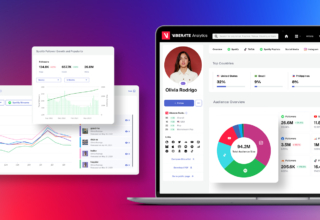
Communicating with your business and personal contacts over the phone is crucial.
However, without an established protocol, you open yourself up to excessive spending that hurts your bottom line. Thus, you must understand how to establish an overwhelming, month-by-month analysis.
With monthly usage of PSTN and VoIP solutions climbing, more and more businesses are likely to find themselves turning to a phone plan to facilitate communication. So how do you decide what is best for you?
For the full breakdown between PSTN vs VoIP plans, keep reading below.
Table of Contents
What is a PSTN?
The PSTN (Public Switched Telephone Network) is the world’s largest voice network. It handles the majority of the world’s telephone calls. The PSTN is a landline telephone network that supports both voice and data communications.
The PSTN is made up of a network of telephone switches. These switches are connected by a system of copper wire and fiber-optic cables. PSTN can handle both voice and data communications by using a technology called Time Division Multiplexing (TDM).
What is a VoIP?
Voice over IP (VoIP) is a type of digital technology that allows users to make voice calls over the internet instead of using a traditional phone line. VoIP is becoming increasingly popular as a way to make calls. It can be cheaper than a traditional phone line and can offer features that are not available with a traditional phone line.
However, VoIP is not without its disadvantages. One potential disadvantage is that VoIP can be less reliable than a traditional phone line. This is because internet connections can be susceptible to data loss or degradation.
Additionally, VoIP can require more bandwidth than a traditional phone line, so users with a limited internet connection may find that VoIP is not an ideal option for them.
Comparing PSTN vs VoIP
There are several key differences between these two technologies, which include:
Switch Technology Used
PSTN uses circuit-switched technology, while VoIP uses packet-switched technology. This means that VoIP is more efficient in terms of bandwidth and can provide a higher quality of service.
Affordability and Maintenance
PSTN is typically more expensive to deploy and maintain than VoIP, due to the need for expensive infrastructures such as copper wires and central office equipment.
Features and Benefits
VoIP offers several features and benefits that PSTN does not, such as the ability to easily integrate with other business applications, scalability, and portability.
To learn more about these two technologies, you may also click here.
Knowing the Difference Between PSTN vs VoIP
If your business is considering a move to either PSTN vs VoIP, it’s important to first understand the key differences between the two technologies. VoIP offers several advantages over PSTN, including lower cost, flexibility, and scalability.
With VoIP, you can also take advantage of features like call forwarding and voicemail-to-email that are not available with PSTN. PSTN may be a good option for businesses that need to maintain a legacy system or that have high-bandwidth needs.
But for most businesses, VoIP is the better choice. Ready to make the switch? Our VoIP experts can help you get started.
For more reads aside from learning about what is a PSTN and VoIP, visit our blog section.
















